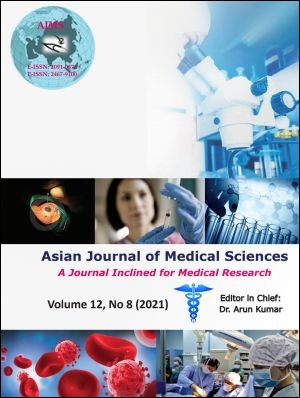Seasonal variation in acute variceal upper gastrointestinal tract bleeding: Experience of one decade from Northern India
Keywords:
Acute variceal upper gastrointestinal bleed (AVUGIB), Varices, Seasonal variation, Upper gastrointestinal bleed (UGI Bleed)Abstract
Background: There have been several reports of seasonal variations in the incidence of esophageal variceal bleeding but the data available from this part of the world is scanty.
Aims and Objective: We aimed to study whether monthly and seasonal climatic changes during the year have an influence on the incidence of variceal bleeding in our setting and whether a particular time in the year can be defined as a high-risk period for variceal bleed.
Materials and Methods: Data of all the patients with diagnosis of acute variceal upper gastrointestinal bleed who presented to our endoscopy centre from January 2010 to December 2019 was retrieved and analysed. The demographic data, clinical presentations and seasonal and monthly variation was analysed.
Results: Out of a total of 10200 patients presenting with upper gastrointestinal bleed during the study time period, 530 patients had a diagnosis of variceal bleed after esophagogastroduodenoscopy (EGD). The majority of variceal bleed patients (48.5%) were seen between May to August months of the year.
Conclusions: Contrary to the most of the literature which shows increased frequency of variceal bleed during winters, our patients bleed more during the months of May and August. This could be explained on the basis of unique socio-cultural and demographic pattern of this part of the world.
Downloads
Downloads
Published
How to Cite
Issue
Section
License
Copyright (c) 2021 Asian Journal of Medical Sciences

This work is licensed under a Creative Commons Attribution-NonCommercial 4.0 International License.
Authors who publish with this journal agree to the following terms:
- The journal holds copyright and publishes the work under a Creative Commons CC-BY-NC license that permits use, distribution and reprduction in any medium, provided the original work is properly cited and is not used for commercial purposes. The journal should be recognised as the original publisher of this work.
- Authors are able to enter into separate, additional contractual arrangements for the non-exclusive distribution of the journal's published version of the work (e.g., post it to an institutional repository or publish it in a book), with an acknowledgement of its initial publication in this journal.
- Authors are permitted and encouraged to post their work online (e.g., in institutional repositories or on their website) prior to and during the submission process, as it can lead to productive exchanges, as well as earlier and greater citation of published work (See The Effect of Open Access).




